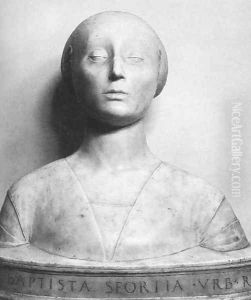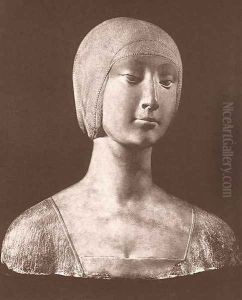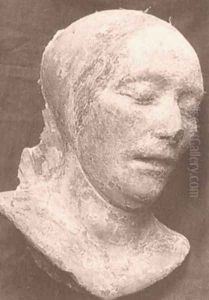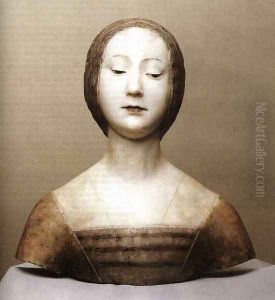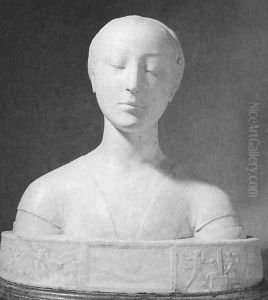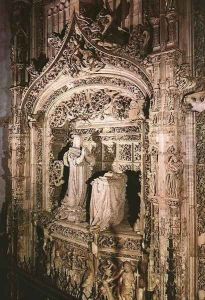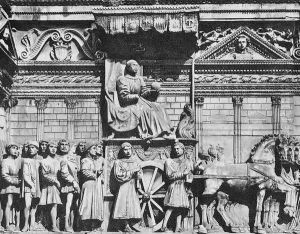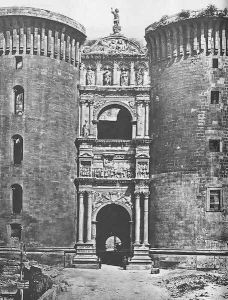Francesco Laurana Paintings
Francesco Laurana, also known as Francesco de la Vrana, was an influential sculptor and medallist of the early Renaissance period whose work bridged the Italian and Provencal traditions. He was born around 1430 in Vrana, near Zadar (now in Croatia), which was then part of the Kingdom of Naples. Laurana is celebrated for his elegant and refined busts, which are characterized by their serene, idealized beauty and exquisite craftsmanship. He is considered one of the most important portrait sculptors of the 15th century.
Laurana's early life and training are not well documented, but it is known that he was active in Naples during the 1450s. His style suggests that he was familiar with the work of leading Italian sculptors such as Donatello and Desiderio da Settignano. He may have been trained in Naples, which at the time was a cosmopolitan center with a vibrant artistic community. By the 1460s, Laurana had moved to Sicily, where he worked on various projects, including architectural designs for the triumphal arch for the Castel Nuovo in Naples.
In Sicily, Laurana created some of his most notable works. He was commissioned by the court of King John II of Aragon and worked in Palermo, where he produced a series of marble busts depicting noblewomen. These portraits are celebrated for their delicate features and serene expressions, and they bear witness to Laurana's skill in capturing the idealized beauty that was favored during the Renaissance. His Sicilian work also includes the façade of the Santa Maria Incoronata in Palermo and the mausoleum of the Aragonese kings in the Monastery of San Nicolò l'Arena in Catania.
Laurana later spent time in France, where he worked for King René of Anjou in Provence. Here he continued his work as a portrait sculptor and medallist, contributing to the diffusion of the Renaissance style beyond Italy. He is credited with having a significant influence on the development of French sculpture, particularly in the realm of portraiture.
The exact date of Laurana's death is uncertain, but it is believed that he died around 1502. Despite the fact that many details of his life remain obscure, Francesco Laurana is remembered for his artistic legacy, which significantly shaped the Renaissance ideal of portraiture. His works are held in numerous prestigious collections, including the Louvre Museum in Paris and the Bargello Museum in Florence.
